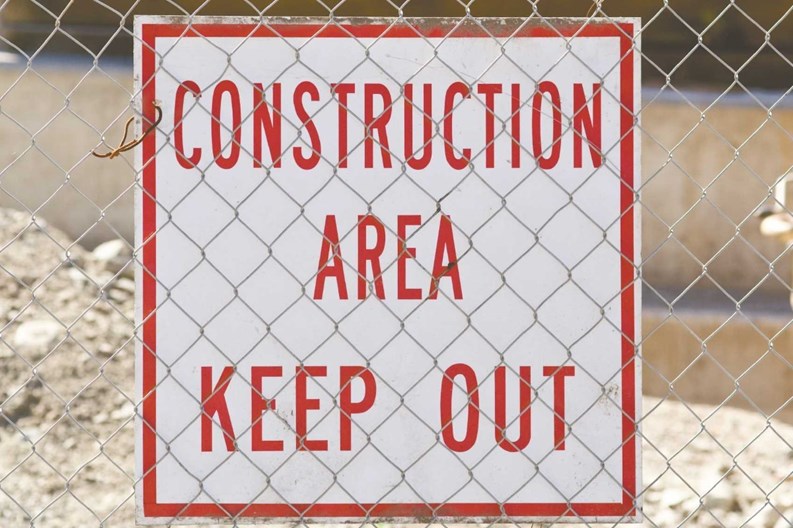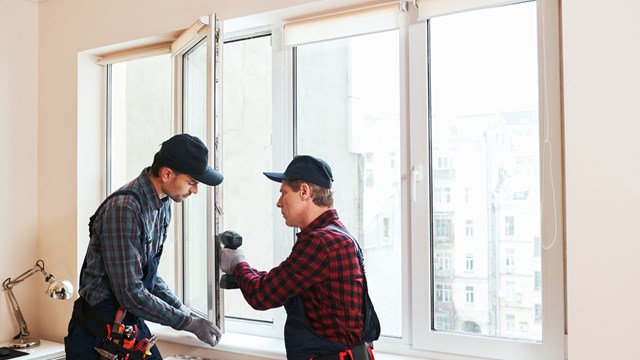Falling bricks. Rickety scaffolding. An errant nail and an unsuspecting foot. Things can go wrong in renovation and restoration projects no matter what the size and scale of the work at hand. Whether the job is tackling a new façade on a high-rise or putting new shingles on a townhome, anything can happen. That’s why state and local governments put so much effort and energy into ensuring the safety of passers-by and why co-op and condo managers turn eagle-eyed and protective of their residents when large projects loom.
When it comes to ensuring resident safety, the keys are inevitably cooperation, communication and foresight. Staying ahead of the curve and taking all necessary precautions can save a lot of headaches—and potential pain—down the road, both of which are good news to unit owners and management alike.
The Safety Net
Over the years as development in the tri-state area has expanded, state and local governmental entities have grown to keep pace. In New Jersey, it’s the state’s Department of Community Affairs’ Division of Codes and Standards that establishes and enforces building codes to protect the health and safety of residents.
With the surge in building that went on for much of the last two decades—as well as more recent incidents, including the tragic crane accidents earlier this year—new and increased efforts have been put into play across the region to enhance and increase safety protocols and procedures. Over the years, arguments have been laid out against such laws, claiming they are too restrictive and ultimately lead to an increased liability insurance burden that must be carried by contractors, which adds building costs throughout the region.
Regulations enacted by the U.S. Department of Labor’s Occupational Safety and Health Administration (OSHA) are designed to protect workers but also can enhance the safety of those around the project.
“Typically on such projects, construction employees have to guard against falling object hazards and tripping hazards and must ensure the structural integrity and stability of scaffolds to name a few,” writes Sharon Worthy of the DOL’s Office of Public Affairs in an e-mail interview. “There are OSHA construction standards that address each of these. For example, regarding falling object hazards, the construction scaffold standard requires that employers provide a means of preventing objects from falling from above (toeboards on scaffolds, debris nets, or barricading falling object hazard areas…)
OSHA also has been working to enhance crane safety regulations for construction crews nationwide. “Cranes pose both crushed-by and struck-by hazards, so OSHA requires that barriers be erected to prevent people not involved in lifting operations from entering the area where a crane is operating,” Worthy writes. “OSHA also has many additional crane safety requirements and is in the process of developing an updated and even more comprehensive crane safety standard.”
Safety Close to Home
Despite the prevalence of significant legislation and safety code enforcement, accidents can still happen, which is why managers and associations stay alert whenever any type of construction project begins in their building or community. The best way to keep people safe is to communicate, says Alan W. Crawford, community association manager with Crawford Community Management Services, LLC in Rumson.
“The best way [to communicate with residents] about upcoming construction is through emails,” says Crawford. “Most homeowners are now connected, and obviously if the community has a website, so posting a news bulletin on the website [is] very advantageous. With a community website, you can actually post notices up as things develop. And then also very important is putting up notices around the building or buildings that are going to be affected by the work, as soon as the work has been approved. We post notices in public areas, like elevators and in the mailroom. We find that we get the best cooperation from homeowners from early notification. The biggest problem is the homeowner saying they didn’t know, no one told them.”
Along with good communication comes conscientiousness about the work-site itself, whether that’s the entire front of the building, or just one hallway at a time. Even the best-prepared residents may be at risk if contractors and their work crews don’t maintain a safe work-site.
“Wherever the working site is going to be, it’s very important that it’s secured,” says Crawford. “If there are walkways that need to be protected, or unit owners’ personal property, like their cars, for example. You can never make a job-site too safe. And again, letting the homeowners know what to expect during what times will also help alleviate [anxiety.]”
“We have a project going on right now…and the contractor has done very little in terms of [safety precautions],” Crawford continues. “We are constantly battling with him to do this, because he’s working up nine stories, he’s blasting away at loose concrete, and that work area should have been contained and screened in to prevent wash-off or falling items. In this particular building, they just started on the back of it where there’s a mailroom entrance. Work started before they even secured or bridged out the mailroom entrance—when residents came in and out from that back area they should have been protected from any spray or falling items.”
Getting Professional Help
With all the other important responsibilities property managers and board members have to hold down, closely overseeing a construction project might fall outside what’s really feasible. In the case of larger projects of longer duration, it may be wise for some HOAs to look into hiring a project manager whose sole duty is to oversee the job-site on a day-to-day basis, make sure safety and security regulations are being followed to the letter, and report back to management.
“If you have a board member who is construction-savvy and has the time, or if you have a contractor you’ve used for 10 years, you don’t always need to hire a manager,” says John Colagrande, vice president of engineering for The Whitman Companies, Inc., in East Brunswick. “If you have [a particular contractor] you’ve used in the past and you’ve had no problems and trust that person, you don’t really need someone out there working with them. If you don’t have that comfort level and you’re bidding the job out, it’s in your best interest to have someone out there watching the project for quality control. A project manager can be a second set of eyes on your behalf, looking out for your best interest.”
Crawford agrees. “You hope that the boards will see the importance of hiring someone separate to be a project manager, and the project manager will then work to keep the project safe. The ultimate liability falls on the contractor when it comes to OSHA-related safety, but if you have a project manager, he or she can determine whether or not work is being done safely and put the contractor on notice if they’re not following all the appropriate precautions.”
Depending on the size and complexity of the job, hiring a project manager can help ease the managing agent’s burden. For a major undertaking, the project manager can ensure that all of the right permits have been pulled and the proper exterior signage affixed as well as all of the needed safety equipment installed among other things. Crawford adds that because the project manager is in daily contact with the contractor, he or she can also be in charge of making sure that all the appropriate information about a given project gets disseminated to managing agents, board members, and even residents. If there’s an update on a project’s status, or if a new phase of an ongoing project is scheduled to commence, the project manager can get that information out.
“Job safety starts before the job even starts,” says Crawford. “Sitting down with the contractor and putting together a list of ‘this is what we need to protect’ and ‘this is what we need to do,’” is crucial preliminary step in any construction project.
Whatever the scale of your construction project, it is imperative for management, builders, and residents to work together to ensure the safety of any and all involved. Laws and regulations must be followed. Safety measures must be taken. People need to look out for one another, to think ahead and try to prevent breakdowns in the system that can lead to injury or damage. Management also needs to communicate clearly and precisely at all times during the process. By following those simple guidelines, work sites can be safe and secure and, more importantly, serve as tantalizing preludes to the beauty of the finished product.
Liz Lent is a freelance writer and a frequent contributor toThe New Jersey Cooperator.







Leave a Comment